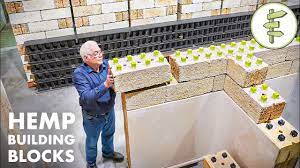
Breaking News
 The #1 Most Dangerous Fat in the World!
The #1 Most Dangerous Fat in the World!
 Is $140K the New Poverty Line? Is This the End of America's Middle Class?
Is $140K the New Poverty Line? Is This the End of America's Middle Class?
 Here Are the NEWLY RELEASED Epstein Images Tied to Powerful Democrats
Here Are the NEWLY RELEASED Epstein Images Tied to Powerful Democrats
 Joe Biden Still Struggling to Raise Money for Presidential Library – No New Donations...
Joe Biden Still Struggling to Raise Money for Presidential Library – No New Donations...
Top Tech News
 This tiny dev board is packed with features for ambitious makers
This tiny dev board is packed with features for ambitious makers
 Scientists Discover Gel to Regrow Tooth Enamel
Scientists Discover Gel to Regrow Tooth Enamel
 Vitamin C and Dandelion Root Killing Cancer Cells -- as Former CDC Director Calls for COVID-19...
Vitamin C and Dandelion Root Killing Cancer Cells -- as Former CDC Director Calls for COVID-19...
 Galactic Brain: US firm plans space-based data centers, power grid to challenge China
Galactic Brain: US firm plans space-based data centers, power grid to challenge China
 A microbial cleanup for glyphosate just earned a patent. Here's why that matters
A microbial cleanup for glyphosate just earned a patent. Here's why that matters
 Japan Breaks Internet Speed Record with 5 Million Times Faster Data Transfer
Japan Breaks Internet Speed Record with 5 Million Times Faster Data Transfer
 Advanced Propulsion Resources Part 1 of 2
Advanced Propulsion Resources Part 1 of 2
 PulsarFusion a forward-thinking UK aerospace company, is pushing the boundaries of space travel...
PulsarFusion a forward-thinking UK aerospace company, is pushing the boundaries of space travel...
 Dinky little laser box throws big-screen entertainment from inches away
Dinky little laser box throws big-screen entertainment from inches away
 'World's first' sodium-ion flashlight shines bright even at -40 ºF
'World's first' sodium-ion flashlight shines bright even at -40 ºF
Lego style hemp blocks, the building material of the future?

What building materials does your house consist of? Surely there is concrete and steel, and in more rare cases, bricks and aerated concrete. But these materials are not the most efficient - they have low noise reduction, they easily remove heat from the room, and they are subject to corrosion and putrefaction. Therefore, new building materials are being actively developed in Europe, and one of them has already gained great popularity - it is known as hempcrete. It is made from hemp and is eco-friendly. But can these hemp blocks replace modern building materials? Concrete as a building material has been known since ancient Rome, as a core material for the construction of public buildings. By the way, the Roman Pantheon is the largest building in the world with a dome made of non-reinforced concrete. Over the centuries, concrete was rarely recalled - they preferred to build structures from stone. And only from the 18th century, did it return to the construction industry. In the 20th century, a revolution took place; an original idea was proposed to improve the characteristics of concrete. It was proposed to place iron reinforcement when pouring inside the structures. So the first high-rise buildings began to appear, and then modern skyscrapers.



